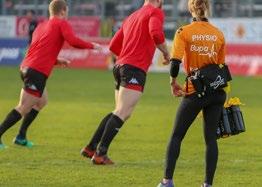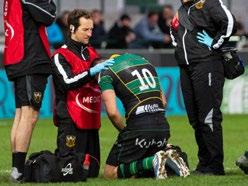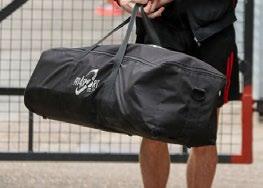


We are sure you will all aware that no one person is ever responsible for a team’s success or failures and that no one person can be an expert in or deliver on everything needed, hence the saying “many hands make light work!”. However, there are also slightly conflicting viewpoints like “too many cooks spoil the broth” or “a little knowledge is dangerous!” so, how do we, as members, of the team behind the team ensure that there is a fully co-ordinated, integrated and well-learnt model of delivery to our players?
The aim of last year’s virtual conference series was to provide some bitesize digestible concepts and case studies to help educate practitioners of aspects not directly related to their own area of expertise and with this in mind this year we hope to bring together such concepts into an aligned and focussed face to face conference now we have the pandemic behind us.
In doing this, Education Co-ordinator, Kevin Paxton, has looked to structure presentations and case studies around the stages of the entire rehabilitation cycle of Clean-up, immediately post-injury, all the way through to the end stage return to Competition.
The conference will incorporate a variety of speaker disciplines that work with an injured player across all the phases of the rehabilitation process such as the Clean-up, acute stages of injury management through to the Clearance of necessary mobility and activation aspects to undertake more intermediate mid stage protocols of Coordination and Change of Direction through to end stage aspects whereby you Chase & Condition certain types of worse case scenarios and then finally onto the return to the 4-corner markers of being ready to Compete.

We hope you will enjoy the wide spectrum of information on show and the engagement of discussing in person how we as practitioners can improve upon the process of;
“Rehabilitation – Clean-Up to Compete”


Many Thanks
Kevin Paxton MSc, ASCC, CSci
MORNING CONTENT
Early to Mid-stage Rehab Phases
AFTERNOON CONTENT
Mid to End stage Rehab Phases
What can organisations do to improve the knowledge base and co-operative work mentality to foster improved interdisciplinary support to athletes in the early phases of an injury?
OVERVIEW
CLEAN-UP
This stage would include any aspects around trauma and acute injury management protocols to ensure no further harm is created and disruption to the diagnosis and prognosis period. It may include examples of pain and swelling management, early tissue remodelling etc.
CONTROL / CLEAR
This stage would include any early methods to restore mobility and muscle function and bridging the gap between the treatment modalities and the gymnasium-based load integration. It may include aspects of interventions with hydrotherapy or bespoke equipment such as isokinetic dynamometry or isometric monitoring.

CO-ORDINATION
This stage would include some of the early loading strategies, functional movement patterning, proprioception etc.
CHANGE OF DIRECTION (i)
This stage would involve some of the force absorption and production exercises and stabilisation training and the preceding pre-planned change of direction drills that would underpin agility-based movements.
What can organisations do to improve the knowledge base and co-operative work mentality to foster improved interdisciplinary support to athletes in the early phases of an injury?

OVERVIEW
CHANGE OF DIRECTION (ii)

This stage would involve some of the plyometric and dynamic stabilisation training and the progression from pre-planned change of direction drills to more reactive agility-based movements.
CHASE & CONDITION
This stage includes any form of adding of external stimuli to promote faster speeds of movement drills and the accumulation of controlled high intensity running.
COMPLETE
This stage focusses on the re-integration requirements for training and the use of certain football specific drills that would assist with any players requiring modification to team training in their return to play phase.






















































































